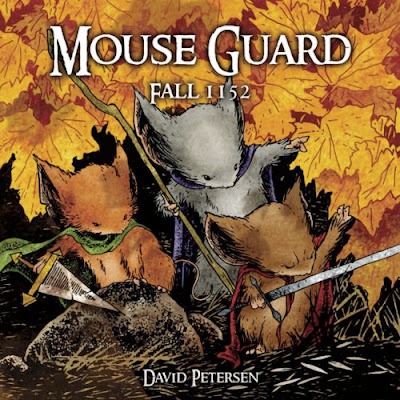 |
| Mouse Guard by David Peterson |
Reluctant readers are usually readers who struggle to enjoy reading. In the upper elementary grades, these are kids that more than likely would have benefitted from additional practice reading picture books, using the visual cues to aide comprehension and assist with visualization. As kids move away from picture books to chapter books, many of them are left needing those visual cues to create meaning from the words on the page. They move to these chapter books before they are ready, and as a result end up reading at the frustration level most of the time.
Enter graphic novels and comics. The stigma of a picture book is not present, and yet the visual cues are. The text allows for students to practice their reading, supported by the images that help tell the story. Suddenly they find reading enjoyable again, because they can understand the plot and relate to the characters. They are unknowingly practicing several of the core reading strategies, including visualization (for what happens between panels), inferencing (again, what happens between the panels), monitoring for meaning, and synthesis.
Two additional positives of these books is that they often hook the reader really quickly. It is rare for these books to go unfinished, as they immediately draw the reader in. Secondly, since they can be quick reads, there is a "real time" interaction with peers. One student will read a comic or graphic novel and immediately hand it to a classmate. An hour later, or at any time in between, they can have a conversation about climactic parts and favorites scenes and characters.
